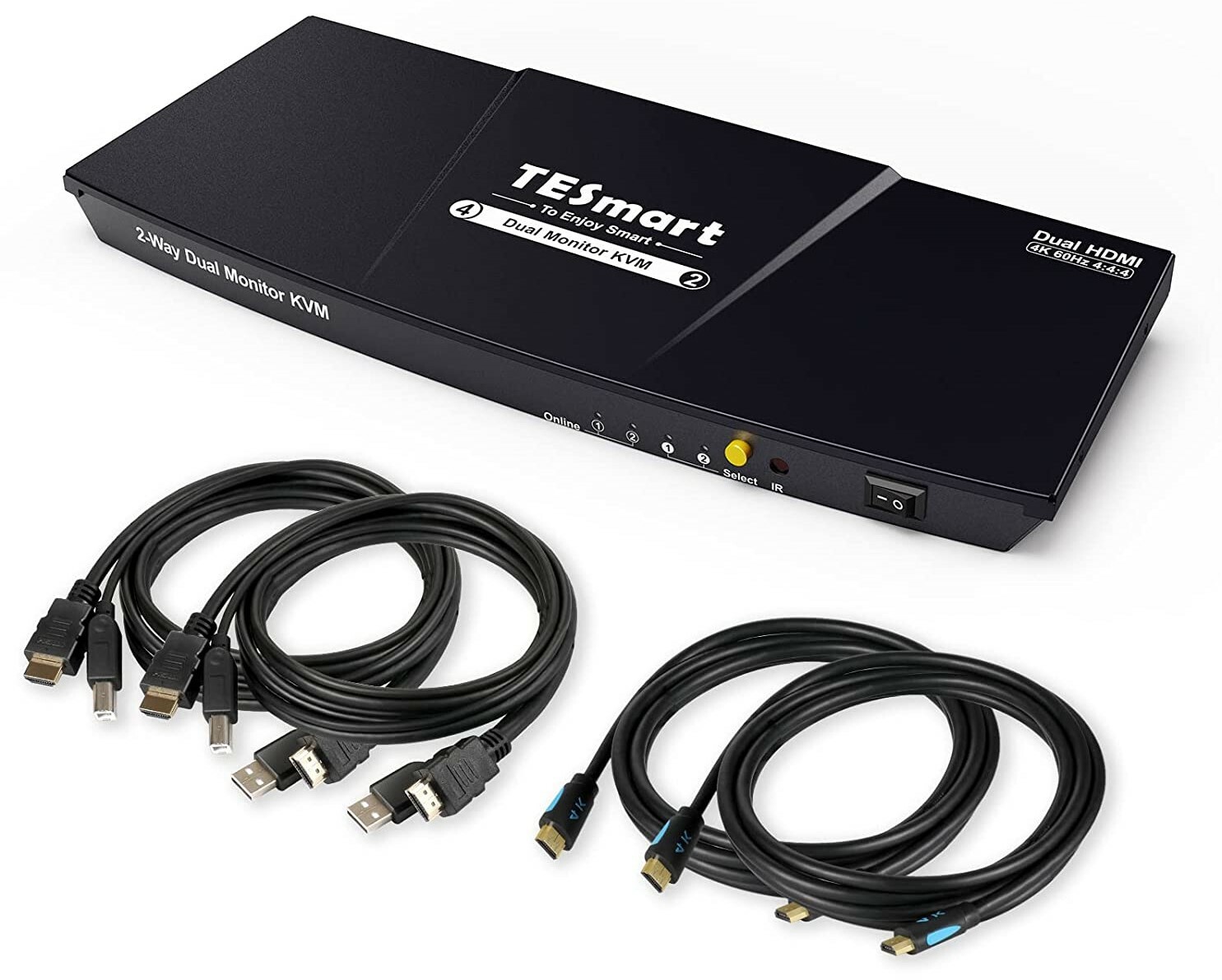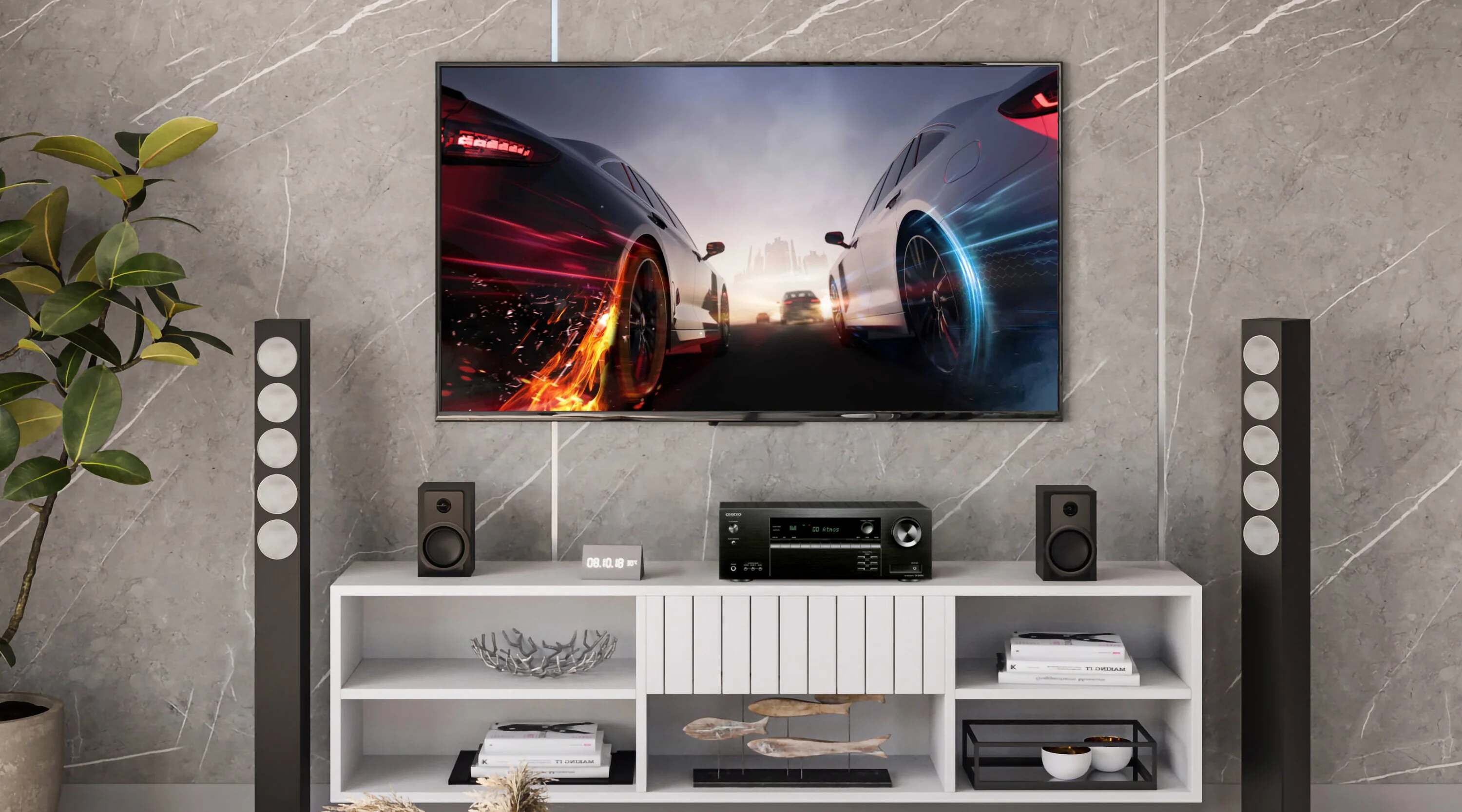Introduction
The advent of high-definition multimedia has revolutionized the way we enjoy audio and video content. One of the key components that enables this seamless digital experience is the HDMI (High-Definition Multimedia Interface) cable. Whether it’s connecting your Blu-ray player to your TV or your gaming console to your monitor, HDMI cables have become an essential part of our everyday tech setup.
HDMI cables serve as the conduit for transmitting high-quality audio and video signals between different devices. They have replaced the old analog connection methods, providing superior picture and sound quality with digital precision. However, have you ever wondered what is actually inside an HDMI cable? How many wires are responsible for delivering such crisp and detailed multimedia content?
In this article, we will delve into the world of HDMI cables and explore how they work. We will uncover the number of wires inside an HDMI cable, their purpose, and how they contribute to the overall audiovisual experience. So, let’s embark on this journey and unravel the secrets behind the wires that power our multimedia connectivity.
What is HDMI?
HDMI, short for High-Definition Multimedia Interface, is a digital interface that allows the transmission of uncompressed audio and video signals between devices. It was first introduced in 2002 as a replacement for analog connections such as VGA and DVI. Since then, it has become the industry standard for high-definition audio and video transmission.
HDMI cables are widely used in home entertainment systems, gaming consoles, computers, and other devices that require high-quality audiovisual connections. They offer a convenient and reliable solution for transmitting high-definition content without any loss of quality.
One of the key advantages of HDMI is its ability to transmit both audio and video signals through a single cable, eliminating the need for multiple cables and reducing cable clutter. This not only simplifies the setup process but also ensures a cleaner and more organized entertainment system.
Another important feature of HDMI is its support for various audio formats, including Dolby TrueHD and DTS-HD Master Audio, which deliver immersive surround sound experiences. In addition, HDMI supports different video resolutions, including standard HD (720p or 1080p), 4K Ultra HD, and even 8K resolution for the latest high-end displays.
HDMI cables also come with built-in copy protection technologies, such as High-bandwidth Digital Content Protection (HDCP). HDCP prevents unauthorized copying or recording of copyrighted content, ensuring that the content creators’ rights are protected.
Furthermore, HDMI is a hot-pluggable interface, meaning that devices can be connected or disconnected while the system is powered on, without the need for restarting the devices. This adds to the convenience and flexibility of using HDMI cables in various setups.
In summary, HDMI is a versatile and advanced digital interface that offers a seamless connection for transmitting high-definition audio and video signals. Its ability to combine both audio and video into a single cable, support for various audio formats and video resolutions, and built-in copy protection technologies make HDMI the go-to choice for modern multimedia connectivity.
The Different Types of HDMI Cables
When it comes to HDMI cables, there are several different types available on the market. These variations cater to different needs and requirements, including compatibility with different devices and support for specific resolutions. Let’s take a closer look at the different types of HDMI cables:
- HDMI 1.4: HDMI 1.4 cables are the most common type found in households. They support standard HD resolutions (720p and 1080p) and are capable of transmitting 3D and HD audio formats. HDMI 1.4 cables also feature an Ethernet channel, which enables sharing of internet connectivity between HDMI devices.
- HDMI 2.0: HDMI 2.0 cables are designed to support higher video resolutions and refresh rates. They are capable of transmitting 4K Ultra HD content at 60 frames per second, providing a more immersive viewing experience. HDMI 2.0 cables also support wider color gamuts and dynamic synchronization of video and audio streams.
- HDMI 2.1: HDMI 2.1 cables are the latest addition to the HDMI family. They offer even higher bandwidth capabilities, allowing for resolutions up to 8K and refresh rates up to 120Hz. HDMI 2.1 cables also support advanced features like Variable Refresh Rate (VRR), Quick Media Switching (QMS), and Auto Low Latency Mode (ALLM), which enhance gaming and streaming experiences.
It is important to note that while HDMI cables come in different versions, most HDMI devices are backward compatible, meaning you can use a higher version cable with a lower version device. For example, an HDMI 2.0 cable can be used with a device that supports HDMI 1.4, but it will only transmit the capabilities of the lower version.
In addition to these variations, there are also different cable lengths available to suit various setup configurations. It is recommended to choose a cable length that allows for flexibility and ease of installation, while also considering future upgrades or repositioning of devices.
In summary, the different types of HDMI cables provide options for transmitting various resolutions, supporting advanced features, and accommodating different devices. Understanding the capabilities and compatibility of each type is essential for selecting the right HDMI cable that meets your specific audiovisual needs.
How Many Wires are in an HDMI Cable?
Inside an HDMI cable, there are actually multiple wires responsible for transmitting the audio and video signals. The number of wires can vary depending on the version of HDMI and the specific features supported. However, all HDMI cables typically consist of 19 individual wires.
These 19 wires can be further categorized into three main groups: data channels, control channels, and ground channels. The data channels are responsible for transmitting the actual audio and video signals, while the control channels handle the communication between devices and enable features like remote control synchronization and device identification. The ground channels ensure proper grounding and shielding to maintain signal integrity.
Out of the 19 wires, 3 carry the red, green, and blue color information for video transmission, while 2 carry the synchronization signals for audio and video alignment. Another 2 wires are dedicated to carrying the audio signals, with support for various formats such as stereo, multi-channel, and high-resolution audio.
In addition to carrying audio and video signals, HDMI cables also have dedicated wires for transmitting the hot plug detect signal, which informs the devices when a cable is connected or disconnected, and the 5V power supply for HDMI-enabled devices that require power.
To ensure optimal signal quality, all 19 wires inside an HDMI cable are precisely soldered and shielded to minimize interference and maximize data transfer speeds. This meticulous construction allows for the seamless transmission of high-quality audio and video signals between HDMI devices.
It is worth noting that while all HDMI cables have the same number of wires, their internal construction and quality can vary. Higher-quality cables often boast better shielding and insulation, resulting in improved signal integrity and reduced signal loss over longer distances.
Ultimately, the 19 wires inside an HDMI cable work together harmoniously to deliver the rich audio and vibrant visuals that we enjoy in our home theaters, gaming setups, and multimedia systems.
The Purpose of Each Wire
Every wire inside an HDMI cable has a specific purpose, contributing to the successful transmission of audio and video signals. Let’s explore the function of each wire in an HDMI cable:
- TMDS (Transition Minimized Differential Signaling) Channels: These three wires, usually colored red, green, and blue, carry the digital video data from the source device to the display. Each channel is responsible for transmitting a specific color component of the video signal. They work together to provide accurate color reproduction and ensure a high-quality video display.
- TMDS Clock Channels: Two wires, typically carrying a differential clock signal, synchronize the data transmission between the source device and the display. They ensure that the audio and video signals are in perfect alignment, avoiding any timing discrepancies that may result in audio and video synchronization issues.
- I2S (Inter-Integrated Circuit Serial Audio) Channels: These two wires handle the transmission of audio signals in digital form. They support various audio formats, including stereo, multi-channel surround sound, and high-resolution audio. The I2S channels deliver pristine audio quality and allow for an immersive audio experience.
- CEC (Consumer Electronics Control) Channel: This wire enables communication between HDMI devices for features like remote control synchronization, device control, and Power-Off Signal. The CEC channel ensures seamless interaction between different HDMI devices connected in a system.
- DDC (Display Data Channel) Channels: These wires, also known as the EDID (Extended Display Identification Data) channels, provide communication between the source device and the display. They exchange essential display information, such as supported resolutions and refresh rates, ensuring optimal video output for the connected display.
- Hot Plug Detect Channel: This wire detects when an HDMI cable is plugged in or unplugged, allowing the devices to recognize and respond to the connection or disconnection event. It ensures that the devices are aware of the HDMI cable’s presence and can adjust their settings accordingly.
- 5V Power Channel: This wire carries a 5V power supply for HDMI-enabled devices that require power. It allows devices such as HDMI switchers, audio receivers, or other peripherals to draw power from the HDMI cable itself, simplifying the overall setup.
Each wire inside an HDMI cable plays a crucial role in the overall audiovisual experience. By working harmoniously, they ensure the accurate and seamless transmission of high-quality audio and video signals, enabling us to enjoy our favorite multimedia content with exceptional clarity and fidelity.
Understanding the HDMI Pinout Diagram
The HDMI pinout diagram provides a visual representation of the arrangement and function of the pins in an HDMI connector. It helps to better understand how the different wires inside the HDMI cable are connected to the pins. Let’s take a deeper look at the HDMI pinout diagram:
The HDMI connector consists of 19 pins, each serving a specific purpose in the transmission of audio and video signals. These pins are numbered and labeled on the diagram, providing a clear reference for identifying their functions. Different versions of HDMI cables may have slightly different pin configurations, so it’s important to consult the specific pinout diagram for the cable you’re using.
Some of the important pins in the HDMI pinout diagram include:
- Pins 1-9: These pins are responsible for transmitting the TMDS channels, with pins 1, 2, and 3 carrying the R, G, and B color signals, and pins 4, 5, and 6 transmitting the corresponding clock signals. Pins 7 and 8 carry the audio signals, and pin 9 is used for digital audio ground.
- Pins 11-15: These pins are known as the DDC channels, with pins 11 and 12 dedicated to bidirectional communication between the source device and the display for exchanging display information. Pins 13-15 are used for the hot plug detect signal, power, and ground, respectively.
- Pin 17: This pin is the CEC channel, responsible for facilitating communication between HDMI devices for control, synchronization, and Power-Off Signal (STANDBY).
- Pins 18 and 19: These pins are the differential pairs for the TMDS channels, providing ground and shielding for the data transmission. They help maintain signal integrity and minimize external interference.
By referring to the HDMI pinout diagram, you can easily identify the functions of each pin and understand how the wires inside the HDMI cable are connected to the corresponding pins in the connector. This knowledge can be valuable when troubleshooting connectivity issues or when customizing HDMI connectors for specific applications.
It is worth noting that the pinout diagram may vary for different HDMI cable versions or configurations, so it is important to consult the appropriate documentation or specification for accurate information.
In summary, the HDMI pinout diagram provides a visual representation of the arrangement and function of the pins in an HDMI connector. Understanding this diagram helps in comprehending the connection between the wires inside the HDMI cable and the pins in the HDMI connector, further enhancing our knowledge of the cable’s functionality.
Factors that Influence the Number of Wires in an HDMI Cable
The number of wires inside an HDMI cable can be influenced by various factors, including the version of HDMI, the supported features, and the desired audiovisual capabilities. Let’s explore some of the key factors that can influence the number of wires in an HDMI cable:
- HDMI Version: Different versions of HDMI support varying levels of audio and video capabilities. As the HDMI standard evolves, new features and functionalities are introduced, requiring additional wires to support these advancements. For example, HDMI 2.0 introduced support for higher resolutions and refresh rates, resulting in the need for more wires to handle the increased data throughput.
- Audio and Video Formats: The audio and video formats supported also play a role in determining the number of wires in an HDMI cable. For instance, cables that carry high-resolution audio signals or support advanced audio formats like Dolby Atmos or DTS:X may require additional wires dedicated to transmitting the audio data.
- Color Depth and Bitrate: HDMI cables that support higher color depths and bitrates may require more wires to transmit the increased data requirements. Deeper color depths and higher bitrates result in larger amounts of data that need to be processed and transmitted, necessitating additional wires to facilitate this transfer.
- Video Resolutions and Refresh Rates: The supported video resolutions and refresh rates can also impact the number of wires in an HDMI cable. Higher resolutions, such as 4K or 8K, and faster refresh rates, such as 120Hz, demand more bandwidth, which may require additional wires to handle the increased data transmission.
- Additional Features: HDMI cables can incorporate additional features like Ethernet connectivity, ARC (Audio Return Channel), or CEC (Consumer Electronics Control). These added functionalities may require extra wires to support the transmission of data, control signals, and power required for these features.
It’s important to note that while the number of wires may differ, HDMI cables are designed to be backward compatible. This means that higher version cables can be used with lower version devices, but they will only transmit the capabilities supported by the lower version.
Ultimately, the number of wires in an HDMI cable is determined by the combination of these factors and the requirements of the specific HDMI version, audiovisual features, and supported resolutions. Understanding these factors can help in selecting the right HDMI cable that meets the desired audiovisual needs and provides optimal performance for your devices.
Conclusion
In conclusion, HDMI cables play a crucial role in our modern multimedia experience, enabling the seamless transmission of high-quality audio and video signals. Inside an HDMI cable, there are multiple wires dedicated to transmitting audio, video, control signals, and power. Understanding the functions of these wires helps us appreciate the complexity and precision behind the technology.
We explored the different types of HDMI cables, such as HDMI 1.4, HDMI 2.0, and HDMI 2.1, each offering specific features and capabilities to meet different audiovisual needs. The HDMI pinout diagram provides a visual representation of the arrangement and function of the pins inside the HDMI connector, offering insights into how the wires are connected.
Factors like HDMI version, supported features, audio and video formats, and desired resolutions influence the number of wires in an HDMI cable. These factors drive advancements in HDMI technology, allowing for higher resolutions, faster refresh rates, and enhanced audio capabilities.
By understanding the intricacies of HDMI cables, we can make informed decisions when selecting the appropriate cables for our devices and setups. Whether it’s enjoying a cinematic movie experience, immersing ourselves in the world of gaming, or achieving professional-grade audiovisual production, HDMI cables provide the foundation for high-quality digital connectivity.
As technology continues to evolve, we can expect further improvements and advancements in HDMI cables, leading to even more immersive and captivating multimedia experiences. So, the next time you connect your devices with an HDMI cable, take a moment to appreciate the intricacy and innovation behind the wires that power our digital world.

























